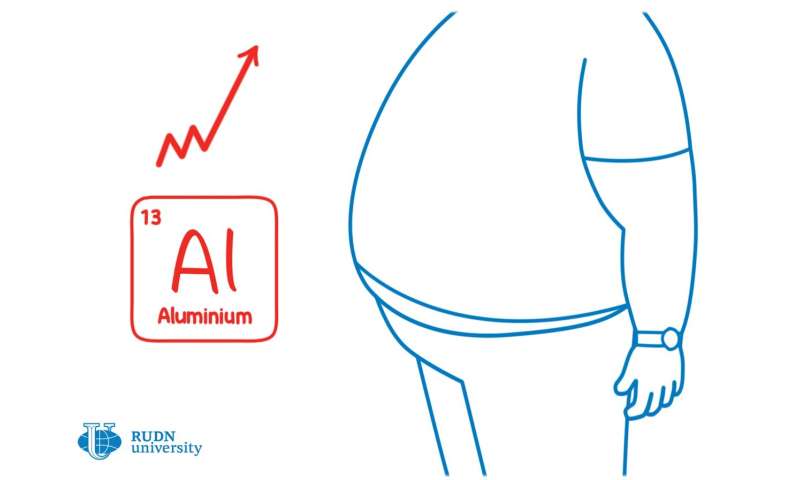RUDN University doctors linked obesity to increased level of aluminium in the body

Doctors from RUDN University have found that concentration of aluminium in obese people is higher than average. One hypothesis is that aluminium can affect metabolism and provoke obesity. The article was published in Journal of Trace Elements in Medicine and Biology.
More than two billion people are obese. The main reason is overeating and a sedentary lifestyle, although other factors, such as genetic predisposition and environmental conditions, can also push a person towards being overweight. Studies show that microelements that enter the body can play a role too, in particular, mercury, cadmium, lead, as well as tin compounds. Aluminium is also considered a toxic metal, that can cause inflammation and oxidative stress in cells. That is why doctors from the group of Anatoly Skalny, head of the Department of Medical Elementology at RUDN University, decided to study if there is a connection between this metal and excess weight.
The study involved 205 people with increased body mass index (BMI) and 206 people with normal weight in a control group. Generally, if the BMI of a person exceeds 30, then a person is considered to be overweight. In the control group, BMI averaged 22.5, and 33.3 in the experimental group.
Each study participant was asked if they suffer from hypertension, diabetes, atherosclerosis, non-alcoholic fatty liver disease, or have bad habits, whether they live close to a source of metal emissions, and if they have metal implants. Then, urine and hair samples were taken from all participants and analysed using inductively coupled plasma mass spectrometry (ICP-MS), a method that allows detecting even miniscule amounts of chemical elements in samples.
It turned out that the average levels of aluminium in the hair and urine of overweight people were significantly higher than in the control group members: by 31% and 46%, respectively. On the other hand, no correlation between the metal content and hypertension, atherosclerosis, and other diseases has been observed. Moreover, the association between increased aluminium and excess weight was observed only if it was found in urine, meanwhile the relation between the increased BMI and aluminium in the hair was not statistically significant, that is, it could have been a product of random deviations.
RUDN University elementologists have come to the conclusion that the aluminium content in the body indeed increases in individuals with obesity. It remains unclear, however, what comes first: it is both possible that people with obesity simply consume a lot of aluminium with food and that aluminium changes the metabolism and that leads to obesity. Anatoly Skalny and his colleagues are planning further research to find answers to these questions.
The article:
Aluminium levels in hair and urine are associated with overweight and obesity in a non-occupationally exposed population
Journal of Trace Elements in Medicine and Biology
Volume 56, December 2019, Pages 139-145
DOI: 10.1016/j.jtemb.2019.08.005
https://www.sciencedirect.com/science/article/pii/S0946672X19302548?via%3Dihub
Research area: Chemistry
Provided by RUDN University